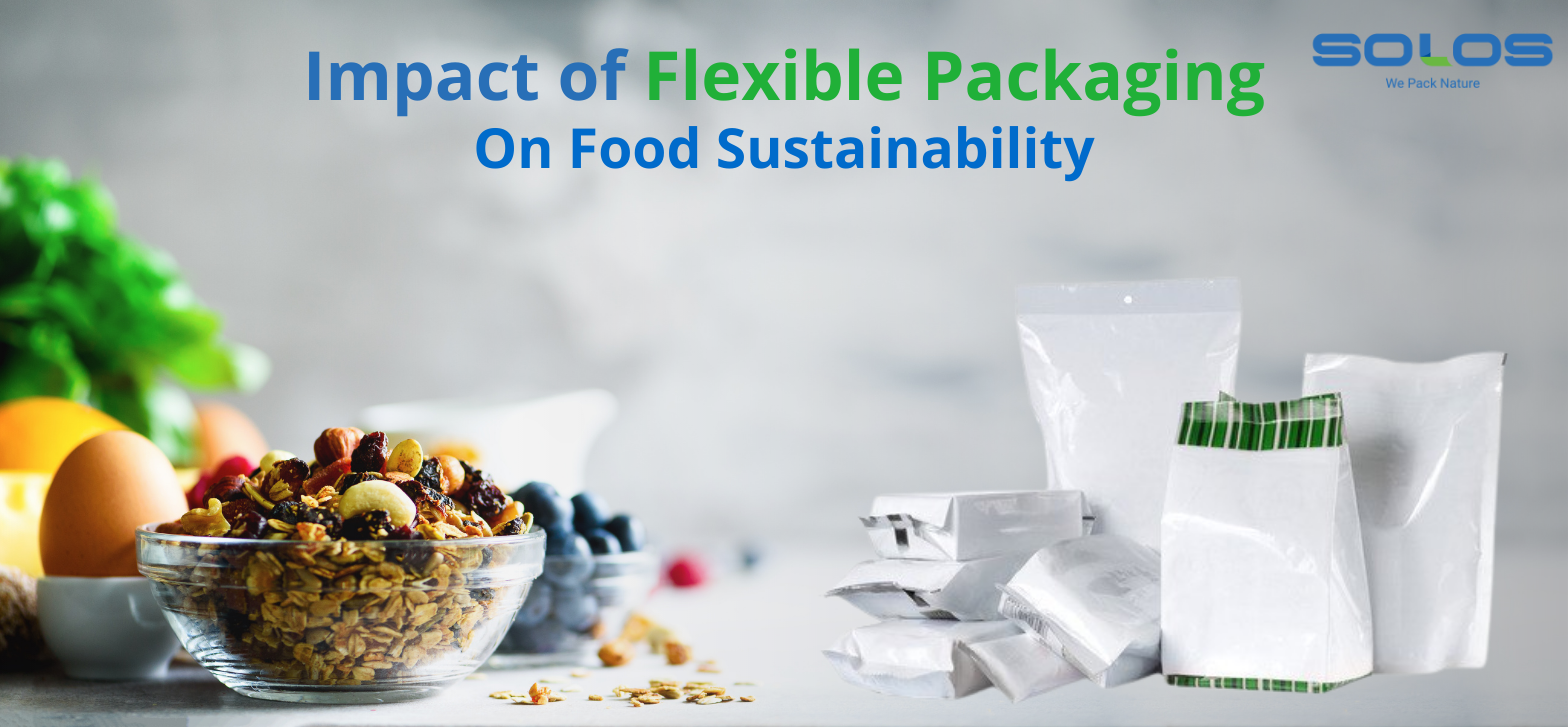Impact of Flexible Packaging on Food Sustainability

Did you know that 2.37 billion people worldwide did not have access to sufficient food in 2020? On the other hand, one-third of food produced globally is lost annually due to coordination gaps between the producers and retail sectors, and consumer habits. Finally, the global food industry is responsible for 30% of all GHG emissions. So, how does it all add up?
Food is precious and its wastage heightens the stress on the environment. Hence, we must reduce food wastage to the minimum. One way of doing so is by optimizing your food packaging.
How optimized flexible packaging is impacting the food industry
The primary function of packaging is to protect food from contamination, spillage, and spoilage. The traditional rigid packaging methods protected food products on all these three counts, but the environmental impact of manufacturing them exceeded the benefits achieved, leading to the evolution of flexible packaging.
The flexible packaging industry, valued at USD30.9 billion, finds application in human consumables, including healthcare products, nutritional supplements, and nutraceuticals. This form of packaging has revolutionized the food industry by reducing spillage during transport and significantly enhancing the shelf life of food products, thus minimizing food wastage.
Reduced chances of contamination ensure food safety
From the farm to the consumer, via the processor, and distribution channel or retailer, food goes through multiple checkpoints with contamination potential. Flexible packaging ensures that your food remains safe through its passage along the supply chain, retaining its freshness without added preservatives, thus maintaining food quality and preventing safety issues like food-borne diseases and chemical contamination.
Contribution towards food security by reducing product wastage
Fresh fruits packaged in perforated packaging have a considerably higher shelf life than when sold loose. Similarly, other edible products too, have a longer shelf life when packed in flexible modes of packaging, thus adding value to the producer, retailer, and the consumer.
Further, innovative concepts like resealable packages, spouted packages for beverages and thick liquids like sauce, and gusseted packages to make products stand up and not fall over, spilling contents, thus reducing wastage of food at the consumer’s end.
Sustainability in total lifecycle of flexible packaging
Flexible packaging production requires minimum resources. According to the Flexographic Technical Association, 2.5 pounds of flexible packaging compared to 84 pounds of glass can pack 100 pounds of beverage. Further, water and energy consumption during the production process is also minimal in the case of flexible packaging solutions. Moreover, the supple, space-saving design of this type of packaging reduces transportation and storage costs significantly, even when handling products.
Though as of now, flexible packages are not readily or fully recyclable, research and innovation in this space are soon likely to present us with fully recyclable options. Still, flexible packaging much uses less raw material and energy than an equivalent alternate packaging which is/can be fully recycled. Plus, flexible packs take up less landfill space at the end of their lifecycle.
The entire processes involved in the production and logistics of flexible packaging contribute to the significant reduction of GHG emissions, thus making them a sustainable choice for food products.
Solos Polymers has built its expertise around producing flexible and minimal-waste packaging solutions. Contact us today to know more about packaging your food products safely, sustainably, and cost-effectively.
